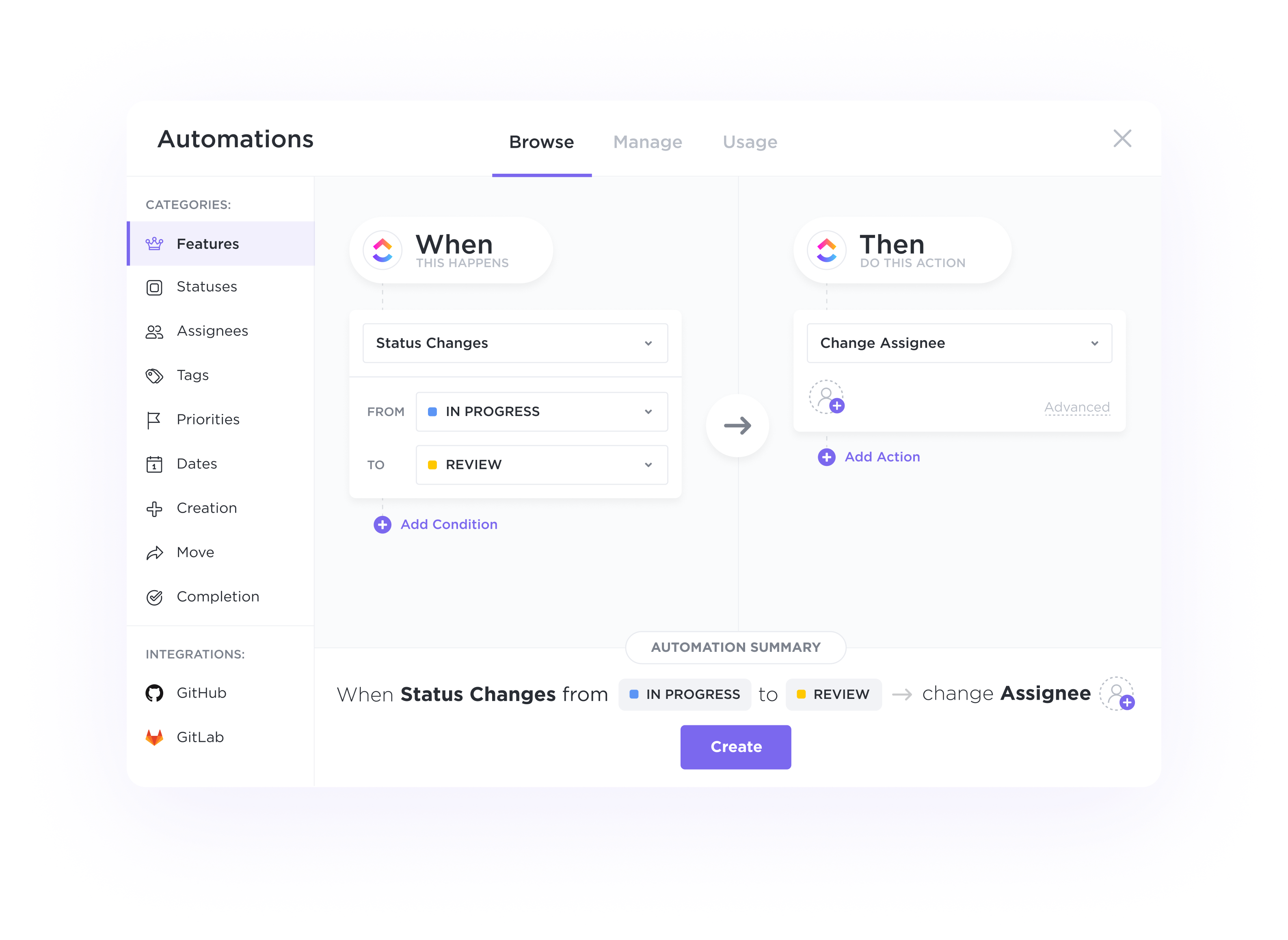Automations
Automate handoffs, status updates, and more.
Automatically assign tasks for each stage of your pipeline, trigger status updates based on activity, and switch priorities to alert your team on where to focus next.

Gantt Charts
Streamline your wildlife research projects with a customized CRM system powered by ClickUp. Organize valuable data, track research progress, and collaborate seamlessly with your team to achieve impactful results. Increase efficiency and stay focused on your mission with our intuitive CRM solution designed specifically for wildlife researchers.
Free forever. No credit card.
Automations
Automatically assign tasks for each stage of your pipeline, trigger status updates based on activity, and switch priorities to alert your team on where to focus next.

Relationships
Create your ideal system to store and analyze contacts, customers, and deals. Add links between tasks, documents, and more to easily track all your related work.

A CRM provides a centralized platform to store all research data, including observations, data analysis, and reports. This centralization eliminates the need for scattered files and ensures that all team members have access to the most up-to-date information.
CRM software helps in managing contacts such as collaborators, volunteers, government agencies, and other stakeholders involved in wildlife research projects. It facilitates communication, tracks interactions, and ensures that important contacts are not overlooked.
CRMs can help in planning and tracking fieldwork schedules, equipment inventory, and expedition logistics. By centralizing this information, researchers can efficiently manage their fieldwork activities and ensure that all necessary resources are available when needed.
Advanced CRMs can integrate with data collection tools such as GPS trackers, camera traps, or satellite imagery to monitor wildlife populations. This integration allows researchers to gather real-time data, analyze trends, and make informed decisions for conservation efforts.
CRM software facilitates collaboration among research team members by providing a platform to share findings, insights, and project updates. This collaboration enhances teamwork, accelerates research progress, and ensures that all team members are aligned on project goals and outcomes.
CRM software can help wildlife researchers by centralizing data on animals, habitats, and research findings, facilitating better organization, analysis, and collaboration across research projects.
Key features and functionalities of CRM software for wildlife researchers include custom data fields for wildlife species tracking, GPS integration for mapping animal movements, image and video documentation capabilities, and collaboration tools for sharing research data with team members and stakeholders.
Yes, some CRM software solutions offer integration capabilities with GIS software and data analysis tools commonly used by wildlife researchers, allowing for streamlined data management and analysis processes across different platforms.